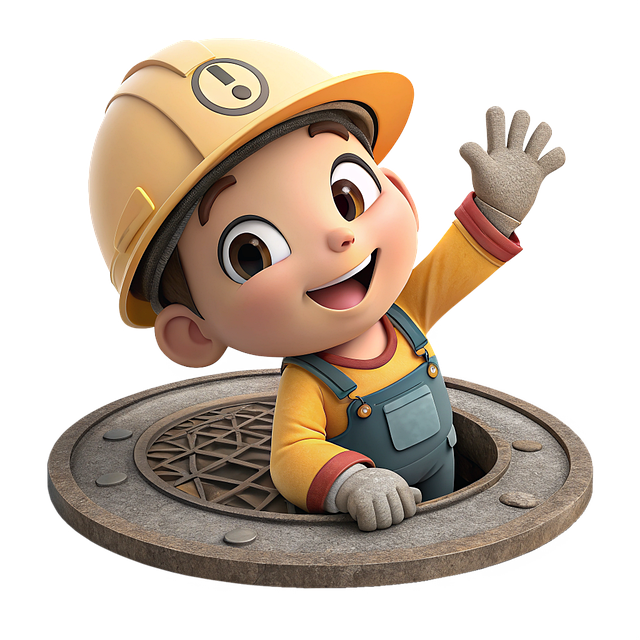High-accuracy utility scanning is a revolutionary technology that enhances underground infrastructure management by offering precise location data for pipelines, cables, and other utilities. Traditional manual methods are inefficient, risky, and time-consuming, but advanced sensors like GPR provide detailed 3D maps without surface disturbances. This improves safety, speeds up projects, reduces disruptions to public spaces, and optimizes resource allocation, ultimately benefiting construction, maintenance, and asset management.
In the realm of infrastructure management, accurately locating underground utility lines is a complex challenge. Traditional methods often fall short, leading to costly delays and potential safety risks. However, the advent of high-accuracy utility scanning technology has revolutionized this process. This article explores how advanced scanning systems overcome these challenges, offering unparalleled precision and efficiency in identifying critical utility lines. From understanding the issues to highlighting diverse applications, we delve into the transformative power of high-accuracy utility scanning.
Understanding the Challenges of Utility Line Location
Locating utility lines accurately and efficiently is a complex task due to various challenges. Traditional methods often rely on manual digging, which is time-consuming, labor-intensive, and carries risks of damaging existing infrastructure. With underground utilities estimated to cost trillions of dollars globally, precise identification becomes imperative to avoid costly mistakes. Furthermore, the increasing depth and complexity of utility networks, combined with varying soil conditions, make visual inspection unreliable.
High-accuracy utility scanning offers a transformative solution. This advanced technology employs sophisticated sensors and imaging techniques to create detailed maps of underground utilities. By utilizing ground-penetrating radar (GPR) and other non-invasive methods, professionals can detect lines with remarkable precision without disturbing the surface. This not only enhances safety but also significantly speeds up location processes, enabling faster project completion times and reduced disruptions to public spaces.
The Rise of High-Accuracy Utility Scanning Technology
In recent years, the field of utility location has undergone a significant transformation with the advent of high-accuracy utility scanning technology. Traditional methods relying on manual excavation or vague visual cues have been supplemented by advanced scanning tools that offer unparalleled precision and efficiency. These innovative solutions employ cutting-edge sensors and imaging technologies to create detailed digital maps of underground infrastructure, including pipelines, cables, and other critical utilities.
High-accuracy utility scanning has emerged as a game-changer in the industry, enabling professionals to locate and map utility lines with remarkable accuracy. By minimizing the risk of damage during construction projects and reducing the likelihood of costly disruptions, this technology is revolutionizing how we manage and maintain our underground infrastructure. With its ability to provide real-time data and precise measurements, high-accuracy scanning provides a robust framework for informed decision-making, ensuring safer and more sustainable development practices.
How High-Accuracy Scanning Systems Work
High-accuracy scanning systems are transforming the way we locate underground utility lines, offering unparalleled precision and efficiency. These cutting-edge technologies utilize advanced sensing capabilities, often combining radar, lidar, and ground penetration radar (GPR) to create detailed maps of subsurface infrastructure. By sending out precise signals and analyzing the reflected data, these systems can pinpoint the exact location, depth, and type of utility lines buried beneath the surface.
The process involves scanning large areas with high-resolution sensors, generating a wealth of data points that are then processed through sophisticated software algorithms. This data is converted into visual representations, such as 3D models or detailed maps, allowing professionals to accurately identify and avoid critical utility lines before any excavation work begins. The result is a more streamlined, safe, and cost-effective utility locating process, ensuring that vital underground infrastructure is protected during construction projects.
Benefits and Applications of Unmatched Accuracy in Utility Lines
Unmatched accuracy in locating and mapping utility lines offers a multitude of benefits, revolutionizing the way infrastructure management is conducted. High-accuracy utility scanning enables efficient and safe excavation, minimizing damage risks to underground utilities. This precision is paramount in preventing costly disruptions, ensuring public safety, and reducing environmental impact during construction or maintenance projects.
The applications of this advanced technology are vast. It streamlines utility asset management by providing accurate, up-to-date information on the location, depth, and type of lines. This data is invaluable for infrastructure planning, design, and construction, facilitating informed decision-making. Moreover, it enhances customer service by enabling faster response times to service requests and reducing the likelihood of service interruptions caused by accidental damage.
High-accuracy utility scanning technology is transforming the way we locate underground lines, offering unprecedented efficiency and precision. By leveraging advanced tools and techniques, professionals can now navigate complex urban landscapes with ease, ensuring safe and swift identification of critical infrastructure. This breakthrough in utility line location not only streamlines construction projects but also minimizes disruptions to daily life, highlighting the immense benefits of adopting high-accuracy scanning systems.
